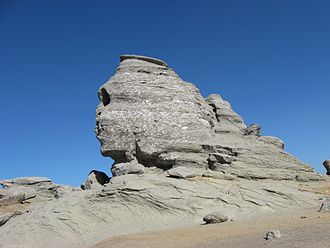The Sphinx and the Old Ladies are spectacular rock formations in Romania’s southern Carpathian mountains, and top destinations for tourists and climbers.
Located on the Bucegi Plateau, wind and rain have turned the rocks into distinctive shapes over the centuries.
Thousands visit them every year. They are believed to be a on a Dacian holy mountain Kogainon where the god Zalmoxis lived in a cave.
The prestige and historical significance of the rocks has led to a legal dispute which began in 2015 about their geographical location.
Two Romanian counties, Prahova and Dambovita, have laid claim to the rocks insisting they lie on their territory.
On Sunday, chairman of the Dambovita county Corneliu Ştefan claimed victory over Prahova county.
On Thursday, a court in the southern county of Valcea ruled that the stone monuments were actually located in Dambovita.
“Even though the decision is not final, all Romanian courts, apart from Prahova courts, say these two monuments are in our county,” he wrote on Facebook, Hotnews reported Sunday.
The Sphinx, in Romanian Sfinxul, is a natural rock formation in the Bucegi Natural Park in the southern Carpathians. It is located at an altitude of 2,216 meters, and part of the Babele or Old Ladies complex of rock formations.
The first photo of the Great Bucegi Sphinx was taken in about the year 1900. TheSphinx features in the 1967 film The Dacians in which it is a place of sacrifice to the god Zalmoxis.
It also has a role in the 1980 film Burebista, in which it is equated with the eponymous ancient Dacian king who is closely connected to the Romanian identity.
Babele or Old Ladies is a popular tourist destination. The name comes from some mushroom shaped rock formations.
Rare ‘Saint’s Halo’ captured on camera in Romanian mountains



















